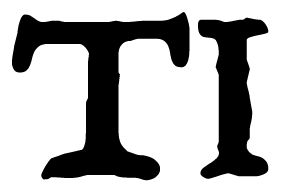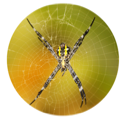Images of the Teacher
Our inherited beliefs often include formulaic images of what it means to be a teacher. Close your eyes for a moment and consider what a typical teacher looks like for you. What particular qualities does this teacher possess? What objects are attached to this teacher? Is there a blackboard nearby? Or perhaps a red apple involved? Kalmbach, Phillips & Carr (2006) suggest be~coming teachers go online and search for teacher images to find patterns in the way teachers are portrayed.
Is the teacher pictured male or female? What is the teacher’s ethnicity? Is the teacher in the center of the picture, placed in a prominent position? Is the teacher in a nontraditional setting? Are there pictures of students teaching students? (p. 17)
It is important to pay attention to the images that surround us and that may influence us on subtle and sometimes unconscious levels. If you look carefully you will see that teachers often inherit traits that are socially normed from a time that is no longer relevant to today’s classrooms. Another question you might have as a be~coming a teacher is: how is my identity as a person different from my identity as a teacher? In TI, we wonder how this binary might be disrupted? Are these really two different things? In what ways might my out of school identity overlap or inform the identity I bring to my teaching?
In section 5.1 we suggested roles that a teacher might take on, given their particular paradigm: the positivist as knowledge transmitter, the progressive as facilitator, the social justice teacher as equalizer, and the indigenous teacher as relational connector. You may have noticed that these categories feel a bit artificial, the descriptions stereotypical, of something that is in reality very complex. Using such categories in certain ways, could lead to a restrictive understanding of who we are as teachers and might even cause psychological harm. That being said, categorizing images can also be useful in that they may point to something that already exists, giving us a place from which to have conversations. These types of labels might also help us think about new possibilities around our roles as teachers.
Ayurvedic Typologies
There are numerous ways to explore human typologies (a way of classifying human characteristics) such as Meyers-Briggs and Enneagram. We have chosen to work with Ayurvedic Typologies because it supports a wholistic approach to classification and because it presents only five categories. In our work with psychologist, Indrus Piché (March 2013) around the edge of counseling and in combination with notes from Dr. Claudia Welch, we would like to present to you a system of typologies that we find useful in discovering meaning in who we are as teachers. It is a way for us to look at ourselves that is less binary and also less static than many common approaches in current cultures. We draw from Ayurveda, a medical and philosophical system that can be translated as “the science of life.” It is a practice that originated in India some ten thousand years ago, and includes a comprehensive study of anatomy, physiology, pathology, diagnostic systems and treatment strategies. In India, it is practiced alone or together with western (allopathic) medicine in hospitals, clinics, private practices, cities and villages. As it relates to education and working in classrooms, there are two features of Ayurveda that can be useful. They are the concepts of Prakruti and Vikruti: an individual’s unique constitution and current imbalance.
As it relates to education and working in classrooms, there are two features of Ayurveda that can be useful. They are the concepts of Prakruti and Vikruti: an individual’s unique constitution and current imbalance.
Prakruti: Your Inborn Constitution
Prakruti is an individual’s baseline constitution and according to Ayurveda, is determined at the moment of conception and relates to inherited or permanent physical and emotional characteristics and tendencies. These would include qualities such as height, natural eye and hair color and innate personality traits. That is not to say that traits cannot change over time - showing up as different behaviour in different situations and times over life. We caution you to avoid reading these descriptions as concrete assessments of your personality. Rather, use the language and descriptions as a way to understand disposition through a different worldview.
Ayurveda teaches that the Universe, and her components, are all made from five basic, archetypal “elements”. These are not synonymous with the elements of our periodic table of elements. They are earth, water, fire, air and ether. Read about the characteristics of each of the elements on the following pages. Each element yields certain qualities that manifest in the universe and in each human being, as his or her individual constitution. There are as many different constitutions as there are human beings. There is far more complexity to how these elements interact and associate themselves and this can be further explored at
Dr. Claudia Welch’s website. Vikruti: Your Current Imbalance
Another step towards understanding health and wellbeing (remember this is physical, spiritual, emotional, and mental health) according to Ayurvedic principles is to understand if and how we have strayed from our natural, healthy constitution. Vikruti is a Sanskrit word loosely translated as a "changed condition of body, mind and consciousness." In Ayurveda, it is most often used to describe your current state of health (or ill-health) in relation to your Prakruti, or "natural state." This can show up as under-expressed or over-expressed elements (e.g. too much Earth, or not enough Water). Given the season and context of life certain elements may be dominant or recessive in our personalities. When all four elements are in proportional harmony theorists such as Jung have called this “wholeness” and Maslow deemed it “self-actualization.”
Your calling or vocation will often call on you to enhance your least developed element (or Vikruti). You may be drawn to people and partners who have a strong presence of the element that is not expressed in your personality; this may be an unconscious way to move towards wholeness. This worldview, though very different from some western-world understandings of disposition, can help us to understand ourselves and the role of our disposition in how we relate to others.






